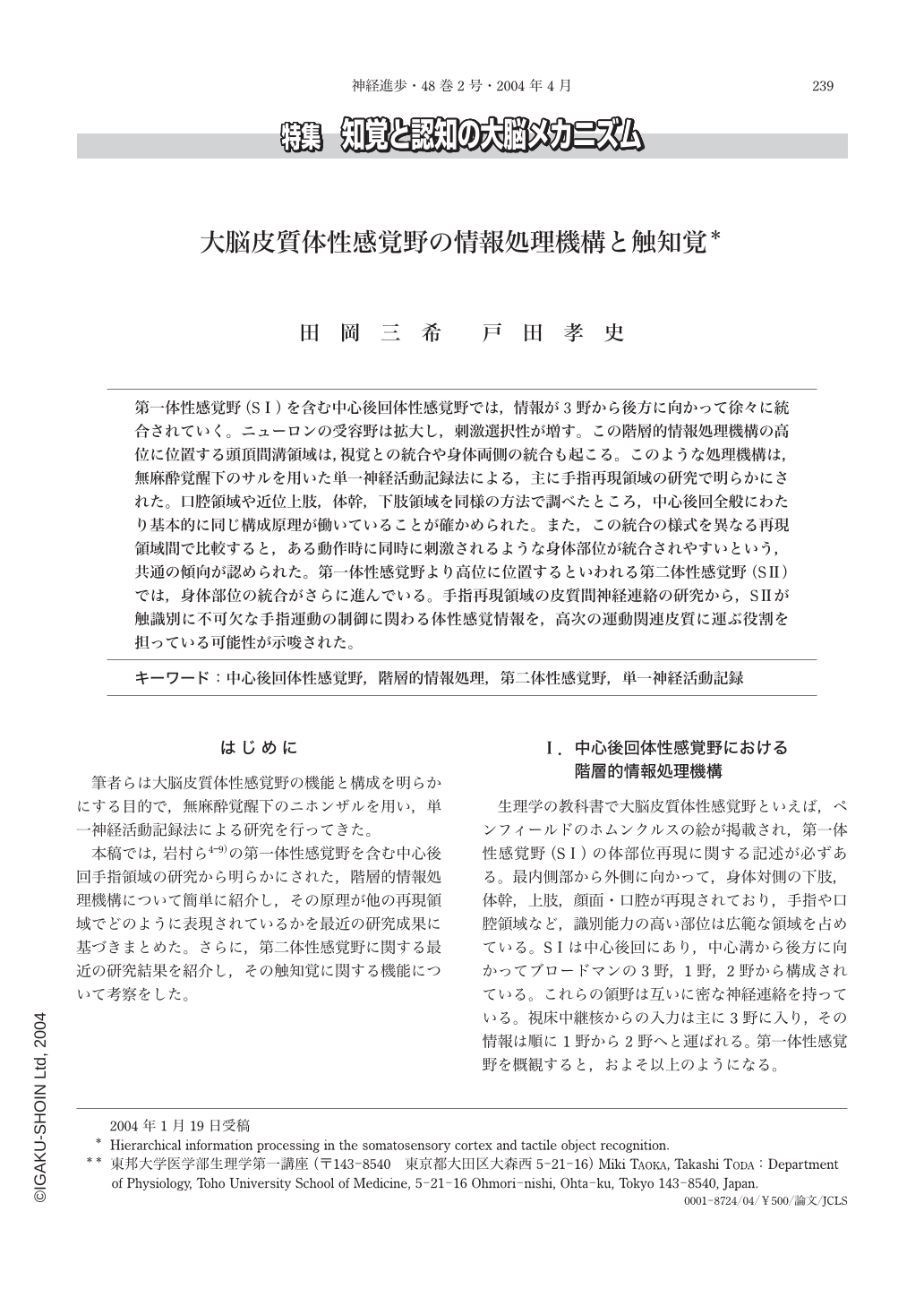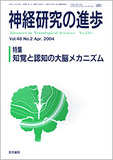Japanese
English
- 有料閲覧
- Abstract 文献概要
- 1ページ目 Look Inside
第一体性感覚野(SⅠ)を含む中心後回体性感覚野では,情報が3野から後方に向かって徐々に統合されていく。ニューロンの受容野は拡大し,刺激選択性が増す。この階層的情報処理機構の高位に位置する頭頂間溝領域は,視覚との統合や身体両側の統合も起こる。このような処理機構は,無麻酔覚醒下のサルを用いた単一神経活動記録法による,主に手指再現領域の研究で明らかにされた。口腔領域や近位上肢,体幹,下肢領域を同様の方法で調べたところ,中心後回全般にわたり基本的に同じ構成原理が働いていることが確かめられた。また,この統合の様式を異なる再現領域間で比較すると,ある動作時に同時に刺激されるような身体部位が統合されやすいという,共通の傾向が認められた。第一体性感覚野より高位に位置するといわれる第二体性感覚野(SⅡ)では,身体部位の統合がさらに進んでいる。手指再現領域の皮質間神経連絡の研究から,SⅡが触識別に不可欠な手指運動の制御に関わる体性感覚情報を,高次の運動関連皮質に運ぶ役割を担っている可能性が示唆された。
Somatosensory information is integrated gradually and systematically in the postcentral gyrus. The receptive field size and response selectivity increase along the rostro-caudal axis. Furthermore, integration of information from both sides of the body and integration of somatosensory and visual information occur in the intraparietal region, the caudalmost of the gyrus. This hierarchical information processing was revealed by single-unit studies conducted in the hand region using awake monkeys. We investigated other regions of this gyrus, the oral/face, arm, trunk and hindlimb regions using the same technique. We found that the concept of the hierarchical information processing could be applied to the representations of these body parts. In the studies of the second somatosensory cortex(SⅡ)we found more complicated receptive fields(RFs)covering multiple body parts, such as those in the upper and lower limbs. In addition, more than a half of RFs covered both sides of the body. We found dense neural connections of SⅡhand region with cortical regions having higher motor function. In tactile object recognition, elaborate hand movement such as maintaining the contact of hand with the contour of the object is necessary to explore the object shape. SⅡhand region may convey somatosensory information essential for controlling the hand movements to higher motor cortices.
(Received:January 19, 2004)

Copyright © 2004, Igaku-Shoin Ltd. All rights reserved.


